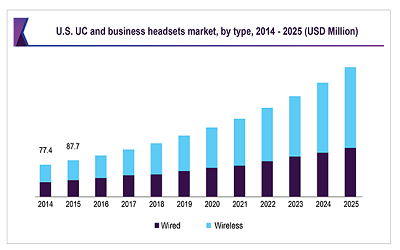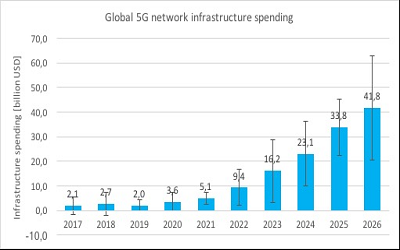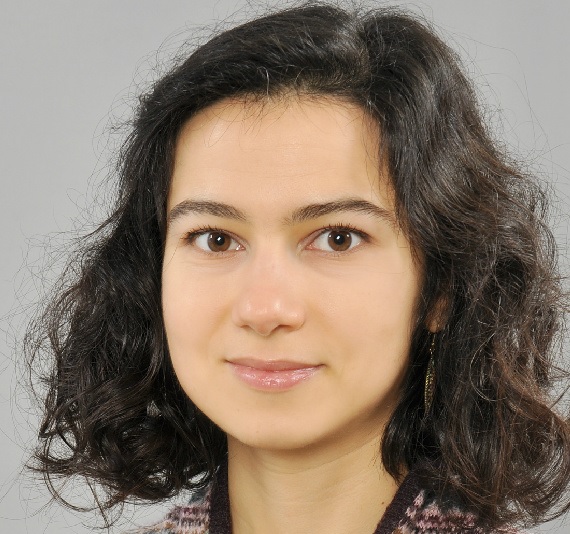About Conference
About Conference
Conference Series llc Ltd. proudly invites contributors across the globe to the 3rd International Conference on Wireless and Satellite Communication (Wireless coference 2022) during March 25-26,2022 , which includes prompt keynote presentations, oral talks, poster presentations and exhibitions and many more.
Wireless Conference 2022 is based on the theme: latest technologies and new innovations in wirelessand the conference mainly focuses on the Wireless and Satellite Communication Devices.
The aim of this conference is to learn and share knowledge on Wireless Technologies. This Conference provides a forum for exchange of ideas and authoritative views by leading scientists as well as business leaders and investors in this exciting field. Outstanding keynote speakers and well known leading scientists and experts from around the globe will be expected to share their knowledge.
We welcome papers describing advanced prototypes, systems, tools and techniques as well as general survey papers indicating future directions are also encouraged. The papers will be reviewed by the Technical Committee on the basis of originality, quality, and relevance to the conference themes. The conference program will include both oral and poster presentations.
|
Conference Name
|
Place
|
Date
|
|
Wireless Conference 2022
|
Berlin,Germany
|
March 25-26, 2022
|
Scientific Sessions
Wireless Communication
In this modern era, Wireless communication have become an integral part of each other to provide wireless communication to common man that helps people located in any part of the world communicate easily. Wireless communication technology transmits information over the air using electromagnetic waves like IR (Infrared), RF (Radio Frequency), satellite, etc. For example, GPS, Wi-Fi, satellite television, wireless computer parts, wireless phones that include 3G and 4G networks, and Bluetooth. This white paper summarizes the importance of Wireless and Telecommunication, their advantages and disadvantages.
Satellite Communication
A communications satellite is an artificial satellite that relays and amplifies radio telecommunications signals via a transponder, it creates a communication channel between a source transmitter and a receiver at different locations on Earth. Communications satellites are used for television, telephone, radio, internet, and military applications. There are over 2,000 communications satellites in Earth’s orbit, used by both private and government organizations.
Communication Theory
Communication is the production and exchange of information and meaning by use of signs and symbols. It involves encoding and sending messages, receiving and decoding them, and synthesizing information and meaning. Communication permeates all levels of human experience and it is central to understanding human behavior and to nearly all public health efforts aimed at fostering health behavior change among individuals, populations, organizations, communities, and societies.
Wireless Network
A wireless network is a computer network that uses wireless data connections between network nodes. Wireless networking is a method by which homes, telecommunications networks and business installations avoid the costly process of introducing cables into a building, or as a connection between various equipment locations. admin telecommunications networks are generally implemented and administered using radio communication. This implementation takes place at the physical level (layer) of the OSI model network structure. Examples of wireless networks include cell phone networks, wireless local area networks (WLANs), wireless sensor networks, satellite communication networks, and terrestrial microwave networks.
Cyber Security
Computer security, cyber security or information technology security (IT security) is the protection of computer systems and networks from the theft of or damage to their hardware, software, or electronic data, as well as from the disruption or misdirection of the services they provide.
Mobile Satellite Communication Networks
The field is becoming more important due to increased reliance on computer systems, the Internet and wireless network standards such as Bluetooth and Wi-Fi, and due to the growth of "smart" devices, including smartphones, televisions, and the various devices that constitute the "Internet of things". Owing to its complexity, both in terms of politics and technology, cyber security is also one of the major challenges in the contemporary world.
Mobile Cloud Computing and Big Data Networking
Mobile Cloud Computing (MCC) is the combination of cloud computing and mobile computing to bring rich computational resources to mobile users, network operators, as well as cloud computing providers. The ultimate goal of MCC is to enable execution of rich mobile applications on a plethora of mobile devices, with a rich user experience. MCC provides business opportunities for mobile network operators as well as cloud providers. More comprehensively, MCC can be defined as "a rich mobile computing technology that leverages unified elastic resources of varied clouds and network technologies toward unrestricted functionality, storage, and mobility to serve a multitude of mobile devices anywhere, anytime through the channel of Ethernet or Internet regardless of heterogeneous environments and platforms based on the pay-as-you-use principle.
5G and Beyond
For many of us, when we send a text or make a call from our cell phones, we're relying on 4G. Though for as much as we rely on it, very few of us know what it actually means. In reality, the "G" in these terms only stands for generation: generation of wireless mobile telecommunications technology. "5G moves us to a truly connected society with very high data rates, low latency, and massively interconnected devices". 5G is generally seen as the fifth generation cellular network technology that provides broadband access. The industry association 3GPP defines any system using "5G NR" (5G New Radio) software as "5G", a definition that came into general use by late 2018.
Why to Attend?
3rd International Conference on Wireless and Satellite Communication is organizing an outstanding Scientific Exhibition/Program and anticipates the world's leading specialists involved in Wireless and Satellite Communication field. Your organization will benefit with excellent exposure to the leaders in Wireless and Telecommunication. You can update your knowledge about current situation of Wireless Technology and receive name recognition at this 2-day event. Wireless Communication event is an exciting opportunity to showcase the new technology. World-renowned speakers, the most recent techniques, tactics, meet experts and the newest updates in Wireless and Satellite Communication fields are hallmarks of this conference.
A great opportunity to network with your peers from academia and industry.
Scientific Sessions
Wireless Communication
In this modern era, Wireless communication have become an integral part of each other to provide wireless communication to common man that helps people located in any part of the world communicate easily. Wireless communication technology transmits information over the air using electromagnetic waves like IR (Infrared), RF (Radio Frequency), satellite, etc. For example, GPS, Wi-Fi, satellite television, wireless computer parts, wireless phones that include 3G and 4G networks, and Bluetooth. This white paper summarizes the importance of Wireless and Telecommunication, their advantages and disadvantages.
Satellite Communication
A communications satellite is an artificial satellite that relays and amplifies radio telecommunications signals via a transponder, it creates a communication channel between a source transmitter and a receiver at different locations on Earth. Communications satellites are used for television, telephone, radio, internet, and military applications. There are over 2,000 communications satellites in Earth’s orbit, used by both private and government organizations.
Communication Theory
Communication is the production and exchange of information and meaning by use of signs and symbols. It involves encoding and sending messages, receiving and decoding them, and synthesizing information and meaning. Communication permeates all levels of human experience and it is central to understanding human behavior and to nearly all public health efforts aimed at fostering health behavior change among individuals, populations, organizations, communities, and societies.
Wireless Network
A wireless network is a computer network that uses wireless data connections between network nodes. Wireless networking is a method by which homes, telecommunications networks and business installations avoid the costly process of introducing cables into a building, or as a connection between various equipment locations. admin telecommunications networks are generally implemented and administered using radio communication. This implementation takes place at the physical level (layer) of the OSI model network structure. Examples of wireless networks include cell phone networks, wireless local area networks (WLANs), wireless sensor networks, satellite communication networks, and terrestrial microwave networks.
Cyber Security
Computer security, cyber security or information technology security (IT security) is the protection of computer systems and networks from the theft of or damage to their hardware, software, or electronic data, as well as from the disruption or misdirection of the services they provide.
Mobile Satellite Communication Networks
The field is becoming more important due to increased reliance on computer systems, the Internet and wireless network standards such as Bluetooth and Wi-Fi, and due to the growth of "smart" devices, including smartphones, televisions, and the various devices that constitute the "Internet of things". Owing to its complexity, both in terms of politics and technology, cyber security is also one of the major challenges in the contemporary world.
Mobile Cloud Computing and Big Data Networking
Mobile Cloud Computing (MCC) is the combination of cloud computing and mobile computing to bring rich computational resources to mobile users, network operators, as well as cloud computing providers. The ultimate goal of MCC is to enable execution of rich mobile applications on a plethora of mobile devices, with a rich user experience. MCC provides business opportunities for mobile network operators as well as cloud providers. More comprehensively, MCC can be defined as "a rich mobile computing technology that leverages unified elastic resources of varied clouds and network technologies toward unrestricted functionality, storage, and mobility to serve a multitude of mobile devices anywhere, anytime through the channel of Ethernet or Internet regardless of heterogeneous environments and platforms based on the pay-as-you-use principle.
5G and Beyond
For many of us, when we send a text or make a call from our cell phones, we're relying on 4G. Though for as much as we rely on it, very few of us know what it actually means. In reality, the "G" in these terms only stands for generation: generation of wireless mobile telecommunications technology. "5G moves us to a truly connected society with very high data rates, low latency, and massively interconnected devices". 5G is generally seen as the fifth generation cellular network technology that provides broadband access. The industry association 3GPP defines any system using "5G NR" (5G New Radio) software as "5G", a definition that came into general use by late 2018.
Photonics
Photonis Scientific is committed to being the world’s leader in the scientific detector market. Our ability to honor that commitment is entirely dependent on the talent, passion and dedication of our people. The foundation of our success. Our core value is integrity. Because no team can exist without it. It’s how we do business. It’s how we interact with each other. It’s how we serve our people and our customers. Photonis Scientific employees come from a broad range of cultures and backgrounds, but we share one common goal of working together to be the very best at what we do.
Optic fibre
An optical fiber is a flexible, transparent fiber made by drawing glass or plastic to a diameter slightly thicker than that of a human hair.Optical fibers are about the diameter of a strand of human hair and when bundled into a fiber-optic cable, they're capable of transmitting more data over longer distances and faster than other mediums. It is this technology that provides homes and businesses with fiber-optic internet, phone and TV services.
Why to Attend?
2nd International Conference on Wireless and Satellite Communication is organizing an outstanding Scientific Exhibition/Program and anticipates the world's leading specialists involved in Wireless and Satellite Communication field. Your organization will benefit with excellent exposure to the leaders in Wireless and Telecommunication. You can update your knowledge about current situation of Wireless Technology and receive name recognition at this 2-day event. Wireless Communication event is an exciting opportunity to showcase the new technology. World-renowned speakers, the most recent techniques, tactics, meet experts and the newest updates in Wireless and Satellite Communication fields are hallmarks of this conference.
A great opportunity to network with your peers from academia and industry.
Main Target Audience:
-
Engineers
-
Academics and students
-
Scientists
-
Aerospace Engineers
-
Space agencies
-
Directors, CEO’s, Presidents and Vice Presidents
-
Related Associations and Societies
-
Researchers & Innovators
-
Buyers and Procurement Specialists
-
Project Managers and Marketing Professionals
-
Government Representatives
-
Consultants
-
Product Developers
-
Funding Agencies & Fund Raisers
Market Analysis
The research report on Global Wireless Communication Market 2020 keenly analyzes significant features of the industry. The analysis servers market size, latest trends, drivers, threats, opportunities, as well as key market segments. It is based on past data and present market needs. Also, involve distinct business approaches accepted by the decision makers. That intensifies growth and makes a remarkable stand in the industry. The Wireless Communication market will grow with a significant CAGR between 2020 to 2028. The report segregates the complete market on the basis of key players, geographical areas, and segments. Wireless communication refers to the communication or transmission of information over a distance without requiring wires, cables or any other electrical conductors. Wireless communication is one of the fastest growing industries in the business world as it is helpful in sending and receiving messages through electronic devices and a wireless medium.

The Global Wireless Communication Technologies market 2019 research provides a basic overview of the industry including definitions, classifications, applications and industry chain structure. The Global Wireless Communication Technologies market analysis is provided for the international markets including development trends, competitive landscape analysis, and key regions development status. Development policies and plans are discussed as well as manufacturing processes and cost structures are also analyzed. This report also states import/export consumption, supply and demand Figures, cost, price, revenue and gross margins.
Global 5G Market
The fifth-generation of mobile technology (5G technology) is expected to cater to the demand and business frameworks needed by and beyond 2020; but it is not without its disruptions. In addition to driving a connected society, 5G wireless technology will bring about socio-economic transformations through productivity, sustainability and well-being. Mobile 5G seems to be on course to be the next big thing in the global digital connectivity ecosystem.
However, mobile 4G LTE will dominate in terms of volume for at least the next ten years. According to a Netscribes research, the global 5G market is forecast to grow at a CAGR of around 97% over a five-year period and will reach a value of USD 251 billion by 2025.

Key Growth Factors
The main driver of 5G is the ever-increasing demand for an enhanced mobile internet experience, clubbed with smartphone adoption among users. 5G technology will address rising bandwidth requirements, demand for advanced application services and improved acceptance of the Internet of Things (IOT).
Why it’s in London?
A holiday in London is the perfect trip all year round. Whether as part of a romantic weekend away or a family holiday, the British capital is full of exciting activities and awe-inspiring historical attractions.
What to do during a holiday in London?
A London holiday wouldn't be complete without a visit to Buckingham Palace. The resplendent home of the British monarchy, visitors to the city can explore some of its wondrous state rooms and view the palace's rotating series of exhibitions and collection of royal art.
The Tate Britain is one of the cultural highlights of the capital and a must for art lovers on holiday in London. Opened in 1897, the gallery's collection spans from the 16th century to the present day and contains significant work by Francis Bacon and Joseph Turner. The gallery has one of the most extensive collections of work anywhere in the world with a stay at a convenient hotel, such as the Jumeirah Lowndes Hotel, the best way to experience its full beauty.
A visit to the London Eye is a great way for visitors to get a panoramic view of the city. The 135 meter high attraction is situated on the banks of the River Thames and was previously the world's tallest Ferris wheel.










